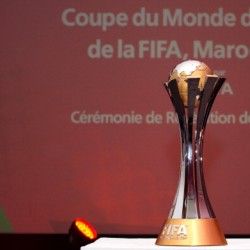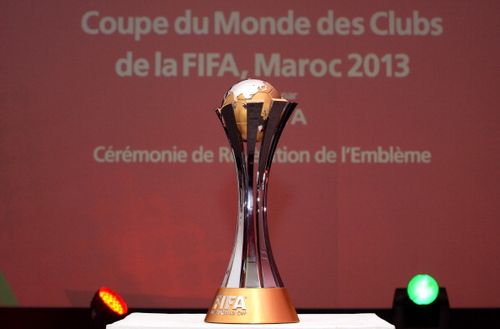
FIFA Club World Cup - A history of FIFA's biggest club competition

Although it is just little over a decade old in its current format, the FIFA Club World Cup has a rich history that dates back to 1909, when, the first attempt at creating a global club football tournament was made, 21 years before the first FIFA World Cup. Whilst the Intercontinental Cup, since its inception in 1960 was considered the pinnacle of club football, the truth was that it was nothing more than a friendly competition. It was one that was contested by the champions of European Cup and the Copa Libertadores. And it was because of this reason that FIFA refused to accept it as a Club World Cup.
Although several attempts were made by CONMEBOL to recognize it as an official tournament, the attempt proved to be futile as it was denied by FIFA every single time. And since it wasn’t an official competition, the winners couldn’t claim themselves to be world champions and FIFA had long held the notion that such a title should exist and thus was born the FIFA Club World Cup as you know it.
And although the very first FIFA Club World Cup was only held in 2000, AC Milan president Silvio Berlusconi was keen on this idea way back in 1993, which he subsequently presented to the Executive Committee in December 1993 in Las Vegas, USA.
One of the major problems with the idea of a Club World Cup containing clubs from all the continents in the early 1950s and 60s was that many confederations had just started and that it was a logistical nightmare to get the clubs to take part in the competition. But, when the idea was proposed in 1993, every confederation had a stable, continental championship and the time was right to finally kick start a Club World Cup, sanctioned and organized by FIFA itself.
When the idea was proposed, nine candidates emerged on the shortlist for hosting the tournament, but only four of them – Brazil, Saudi Arabia, Mexico and Uruguay had intimated their interest to FIFA. The D-Day arrived and on 3 September 1997, when FIFA selected Brazil to host the competition, which was initially scheduled to take place in 1999.
Many Brazilian and European clubs saw this as a golden opportunity of becoming the first genuine world champions. They were awaiting the start of the competition that will not only bring them plenty of name and fame, but also $28 million(USD) in prize money. And although the draw for the competition was done in October 1999, the competition was postponed by one year.
And so it was, that in 2000, that the FIFA Club World Cup kicked off with a lineup of continental champions that included Brazilian clubs Corinthians and Vasco da Gama, Real Madrid and Manchester United from Europe, Mexican club Necaxa, Moroccan club Raja Casablanca and from Asia it was Saudi club Al-Nassr and eighth and final team was Australia’s South Melbourne.
The first goal of the competition was scored by Real Madrid’s Nicolas Anelka against Al-Nassr in a game that they went onto 3–1. However, in a turn-up for the record books, the final was contested between two Brazilian clubs and it was Corinthians who were the winners of the inaugural tournament, beating local side Vasco da Gama 4–3 on penalties after the two sides couldn’t be separated in 120 minutes.
Just when it looked as though everything was alright, disaster struck. The second edition of the competition, which was scheduled to take place in Spain in 2001, featuring 12 clubs, fell through, thanks mainly to the collapse of FIFA’s marketing partner International Sport and Leisure.
Although there attempts to stage it again, it was not until 2005 that the next tournament was held in Japan. This was made possible, following FIFA’s talks with UEFA, CONMEBOL and Toyota, where it was decided that it will be merged along with the Intercontinental Cup into one event.
The new and improved 2005 version was shorter than the previous World Championship, featuring just the six reigning continental champions and the national champions of the host nation. The format that was used in 2005 is still being used to this day. In this format, the champions of Asia, Africa and North America are directly placed in the quarterfinals whilst the European and South American champions are given a bye into the semi-final stage.
Aside from the changes in the format, a brand-new trophy was also introduced and the 2005 tournament was a continuation of the Brazilian domination of the tournament, with Brazilian clubs winning in the opening three editions. The second edition of the tournament was won by Brazil’s São Paulo as they beat Liverpool 1-0 in the final. And it was not until 2007 that, Brazil’s hegemony was broken, when AC Milan won the trophy after beating Boca Juniors 4-2 in the final.
After that, it was Europe’s turn to dominate, with the trophy staying in Europe for the next four years, with Inter Milan, Barcelona (twice) and Manchester United all winning the trophy before it returned back to Brazil in 2012, when Corinthians won it for the second time, beating Chelsea 1-0 last year. The tournament had been held in Brazil, Japan and UAE until Morroco became the fourth country to host the tournament, having won the bid for this year’s and next year’s tournament.
In the nine tournaments that has taken place since the first in 2000, the FIFA Club World Cup tournaments has been won by seven different teams, with Barcelona and Corinthians leading the pack with two wins each. With Bayern Munich in the final this time around, they will be hoping to become the fifth different European team to win the title and extend Europe’s advantage in the competition furthermore.